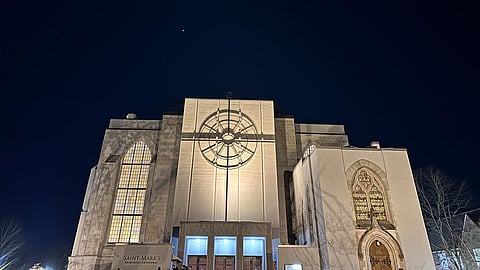Seattle Churches React to Trump's Attack on 40-Year Precedent of 'Sanctuary'
A day after Donald Trump took office, the Department of Homeland Security passed a directive to allow Immigration and Customs Enforcement (ICE) and Customs and Border Protection (CBP) into churches, schools, and hospitals. These areas were previously protected by the Biden administration to allow individuals to safely access essential services.
Places of worship, and churches in particular, have offered sanctuary to migrants since the 1980s when the church sanctuary movement in its contemporary form began to aid people traveling from Central America who were being denied asylum. The tradition continued on through the first Trump presidency.
In 2019, Saint Mark's Episcopal Cathedral in Capitol Hill housed, for more than two years, an immigrant father of a young child who was at risk of immediate deportation. Another immigrant father of three found sanctuary at Gethsemane Lutheran Church in downtown Seattle for over a year.
"We see providing sanctuary as an integral part of a church's mission and response to neighbors as an expression of compassion and accompaniment of individuals who are seeking refuge from injustice in our community," said Joey Lopez, co-executive director of the Church Council of Greater Seattle.
"Providing sanctuary is not intended to be an act of disobedience or defiance," said Rev. Steven Thomason, dean of Saint Mark's Episcopal Cathedral. "Saint Mark's has been committed to 'welcoming the stranger.' It goes back to our Biblical heritage. That's what God calls us to do, that we are to welcome those who are not from our place and welcome them as we would anyone based on the dignity and respect that we have for every human being."
At Saint Mark's, Thomason said providing sanctuary means more than just providing a place to live. It's also about "walking alongside them" especially when they feel threatened or attacked, or are fearing for their safety. Thomason notes that they also ensure access to quality legal aid.
Sanctuary isn't protected by law — Biden's previous policy was simply a policy and not legislation — but it has generally been respected. Houses of worship have long been considered "sensitive areas" where enforcement action is typically avoided. Both Thomason and Lopez see the new directive by the Department of Homeland Security to be an encroachment on religious freedom, as it infringes on their ability to complete their mission of aiding the vulnerable. On Feb. 24, a district court judge in Maryland blocked the order.
"The Religious Freedom Restoration Act sets this precedent or this understanding that prohibits any agency department, official of the United States, or any state from burdening a person's exercise of religion," Lopez said. Religious freedom is also codified in the U.S. Constitution under the Bill of Rights.
"We really feel like this is an important part of the work we do as people of faith informed by our Biblical values," Thomason said. "It's really quite tragic that we, as a nation, are demonizing a broad swath of people just because of the place where they happen to be born rather than the consequences of their actions."
Today, numerous church communities in Seattle's South End and South King County are exploring whether to offer a home to immigrants who face removal by ICE. The Church Council of Greater Seattle says more announcements about sanctuary communities are to come this spring.
Help keep BIPOC-led, community-powered journalism free — become a Rainmaker today.


